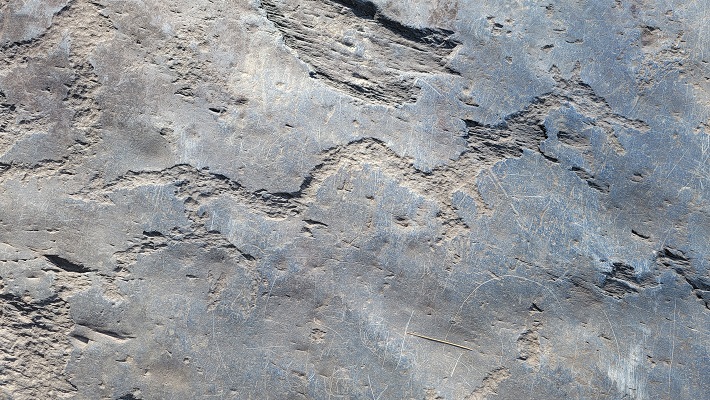
Petroglyphs are found world-wide and usually are prehistoric; the term refers to a rock surface that is incised, carved or abraded. Pictographs are images drawn or painted on a rock face and both types fall into the category of rock art with many examples found in New England.
Since time immemorial, Native Americans used a symbol-based form of writing. Some of these symbols were used to convey messages to others passing at a later time; some symbols were used to record events important to the tribe's history. These symbols fall into two main categories: Pictographs, which are painted on rock or ledge and Petroglyphs, which are carved, chipped or scratched into the stone.
As a North American archaeologist and the editor of the recent Handbook of Rock Art Research, David Whitley (2001:23) asserts that the term “rock art” has been in use for “roughly 100 years,” at least within the “Western intellectual tradition.” Yet, he offers no citations to support his claim. Judging from the bibliographies of major syntheses of North America, the term “rock art” was not used until the early 1960s (Whitley 2001:43-51, c.f., Grant 1967:156-170; Mallery 1893:778-807; Wellmann 1979:173-196). In fact, the first continental synthesis began with idea of “writing,” not rock art (e.g., Mallery 1893).
How are rock art and writing defined? Why was the concept of writing abandoned in favor of the idea of rock art in North America? What may be discerned from tribal accounts? Is the notion of rock art appropriate in application to ancestral Native North America?
Painted Dreams, Native American Rock Art by Thor Conway, a curly headed, blonde fellow, whose daughters are named Amber Wahsayah, Tara Nowahtin and Cedar Geegahkwah - which shows where his heart is. I decided to read this one first to get it out of the way form the really "good" stuff. As I read along, I found thatConway's emphasis was on the vision quests of the native people expressed in the paintings and carvings we call rock art, an integral part of the sacred earth. Two general terms are defined: pictograph refers to a paintingon rock, while petroglyph refers to a carving into the rock's surface. Shamans who entered trance states to gain access to the spirit world produced large amounts of North American rock art. Numerous motifs are found on the dreaming rocks: handprints, zigzag lines, sun symbols and cupules.
Read full article (PDF): PAINTED DREAMS Review by Betty Peterson, NEARA Journal, Vol. 34 No. 2 Winter, 2000
North American Indian varieties of writing are found on many types of media, but those put to rocks are most enduring. Rather than accept tribal accounts, many contemporary North American historians, anthropologists, and archaeologists prefer the term “rock art.” Ideas of rock art and writing have important implications.
Rock art may be defined in any number of ways that are best suited to researchers’ structural, technological, semantic, cognitive, contextual, taphonomic, and/or functional approaches.
Read full article (PDF): ROCK ART, WRITING AND THE CADMUS MYTH by Rex Weeks, NEARA Journal, Vol. 38 No.2. Winter, 2004